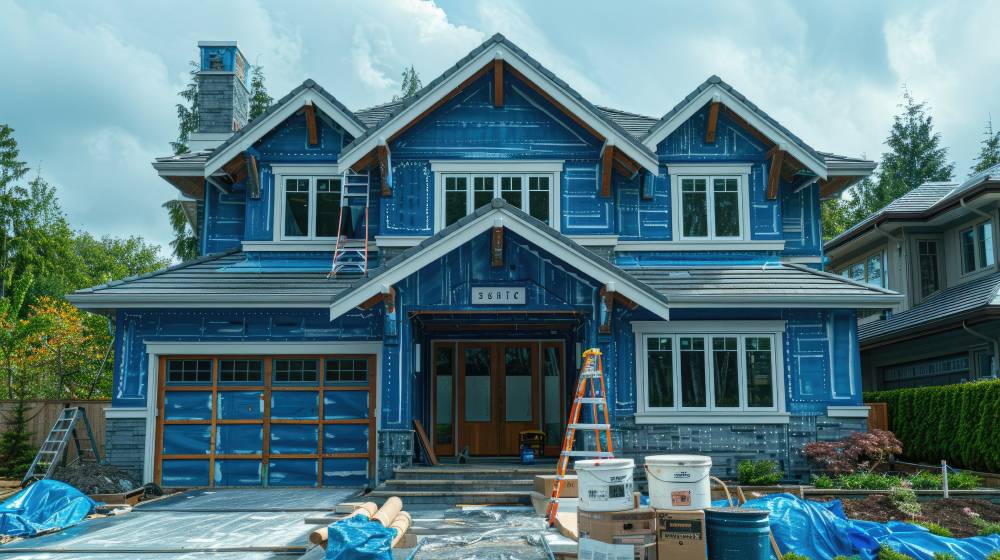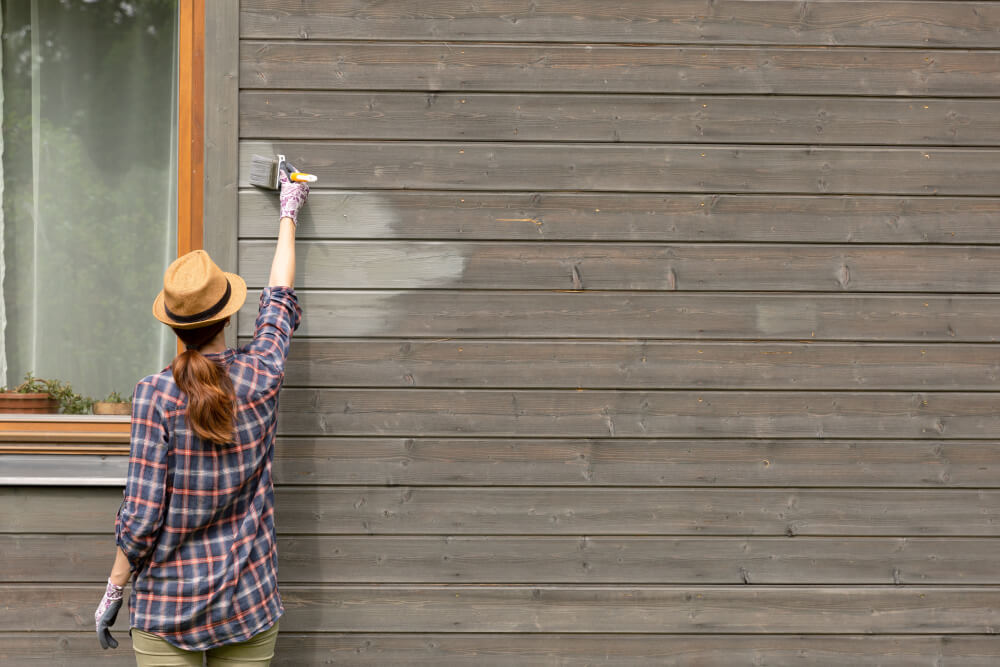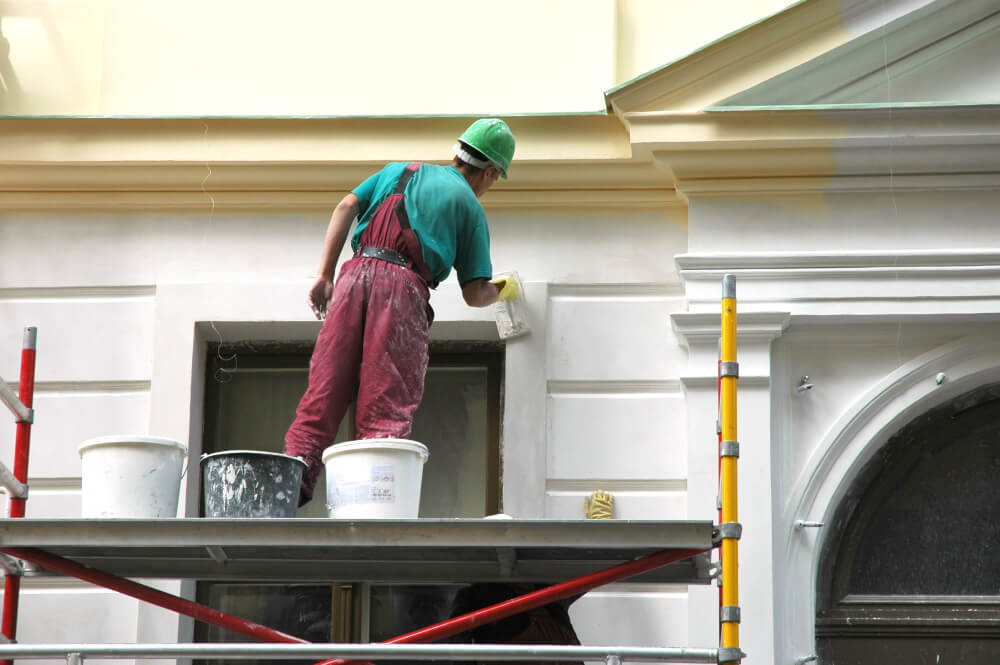In today’s world, where environmental concerns are at the forefront of many home improvement projects, eco-friendly exterior painting has become a priority for homeowners looking to reduce their environmental impact. Choosing sustainable options and practices for your exterior painting project not only helps protect the planet but also ensures a healthier home environment. This comprehensive guide will explore eco-friendly paint options, sustainable practices, and tips for achieving a beautiful, long-lasting, and environmentally responsible exterior paint job.
Why Choose Eco-Friendly Exterior Painting?
- 1. Environmental Impact Traditional paints often contain harmful chemicals and volatile organic compounds (VOCs) that can pollute the air, water, and soil. Eco-friendly paints are formulated to minimize these impacts, helping to preserve natural resources and reduce pollution.
- 2. Health Benefits Low-VOC and zero-VOC paints improve indoor and outdoor air quality, reducing the risk of respiratory issues, allergies, and other health problems associated with toxic fumes.
- 3. Long-Term Savings Eco-friendly paints and sustainable practices can extend the lifespan of your paint job, reducing the frequency of repainting and saving money in the long run.
Eco-Friendly Paint Options
- 1. Low-VOC and Zero-VOC Paints
Low-VOC and zero-VOC paints emit fewer volatile organic compounds, making them safer for both the environment and your health. These paints are available in a wide range of colors and finishes, providing the same durability and coverage as traditional paints.
- Pros:
- Reduced environmental impact
- Improved air quality
- Wide variety of options
- Cons:
- Can be more expensive than traditional paints
- Pros:
- 2. Natural Paints
Natural paints are made from renewable resources such as plant oils, resins, and minerals. They are biodegradable, non-toxic, and free from synthetic chemicals and VOCs.
- Pros:
- Completely natural and biodegradable
- Non-toxic and safe for sensitive individuals
- Cons:
- Limited availability and color options
- May require more frequent maintenance
- Pros:
Join HICP Homeowner’s Alliance
Connect with experts, get special discounts and enjoy member benefits
- 3. Recycled Paints
Recycled paints are made by reprocessing leftover and unused paint. This reduces waste and conserves resources, making it an environmentally friendly choice.
- Pros:
- Reduces landfill waste
- Cost-effective
- Available in various colors and finishes
- Cons:
- Limited color consistency and availability
- May require additional mixing for uniformity
- Pros:
Sustainable Practices for Eco-Friendly Exterior Painting
- 1. Proper Surface Preparation Preparing the surface properly is crucial for a durable and long-lasting paint job, reducing the need for frequent repaints. Clean the surface thoroughly, repair any damage, and use eco-friendly primers to ensure optimal adhesion and performance.
- 2. Efficient Use of Paint Use paint efficiently to minimize waste. Calculate the exact amount of paint needed for your project, and apply multiple thin coats instead of one thick coat to ensure even coverage and durability.
- 3. Choose Sustainable Tools and Materials Opt for eco-friendly painting tools and materials, such as brushes and rollers made from recycled or sustainable materials. Avoid disposable items whenever possible, and properly clean and store your tools for future use.
- 4. Safe Disposal of Paint and Materials Dispose of paint and painting materials responsibly. Do not pour leftover paint down the drain or throw it in the trash. Instead, take it to a local hazardous waste disposal facility or participate in paint recycling programs.
- 5. Energy-Efficient Practices When painting the exterior of your home, choose times when energy consumption is low, such as early morning or late afternoon. This reduces the demand for air conditioning and heating, helping to conserve energy.
- 6. Protect Surrounding Areas Use drop cloths and painter’s tape made from recycled materials to protect surrounding areas from paint splatters. This minimizes waste and makes cleanup easier and more environmentally friendly.
Eco-Friendly Painting Techniques
- 1. Hand-Painting While using paint sprayers can be efficient, they often result in more overspray and wasted paint. Hand-painting with brushes and rollers allows for more precise application, reducing waste and ensuring even coverage.
- 2. Use of Paint Extenders Paint extenders are additives that increase the coverage and longevity of your paint, reducing the amount needed for your project. Choose eco-friendly extenders that do not contain harmful chemicals.
- 3. Choosing the Right Finish Selecting the appropriate finish for your exterior surfaces can enhance durability and reduce the need for frequent maintenance. Satin and semi-gloss finishes are more resistant to dirt and moisture, making them ideal for high-traffic areas.
Maintaining Your Eco-Friendly Paint Job
- 1. Regular Cleaning Keep your exterior surfaces clean by washing them regularly with eco-friendly cleaning solutions. This prevents dirt, mold, and mildew buildup, extending the life of your paint job.
- 2. Timely Repairs Address any damage or wear promptly to prevent further deterioration. Touch up small areas with leftover paint to maintain a uniform appearance and protect the underlying surfaces.
- 3. Monitoring for Issues Regularly inspect your exterior paint job for signs of peeling, cracking, or fading. Early detection allows for timely intervention, reducing the need for extensive repaints and minimizing environmental impact.
Eco-friendly exterior painting is a sustainable and responsible choice that benefits both the environment and your home. By selecting low-VOC or natural paints, adopting sustainable practices, and using efficient techniques, you can achieve a beautiful and durable finish while minimizing your ecological footprint. Investing in eco-friendly options and practices not only contributes to a healthier planet but also ensures a safer and more comfortable living environment for you and your family. Embrace the principles of sustainability and enjoy the long-term rewards of a well-maintained, eco-friendly exterior paint job.








